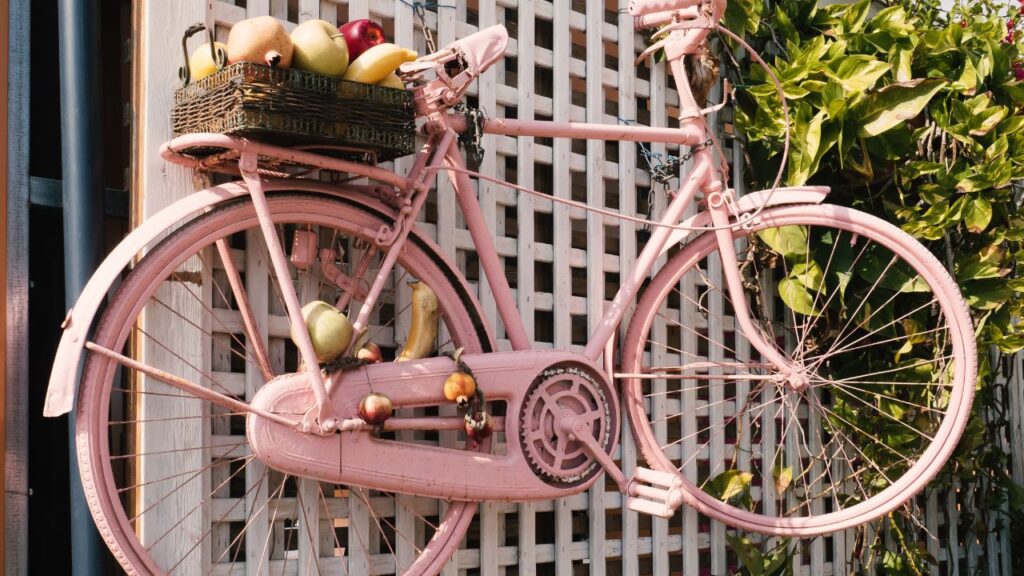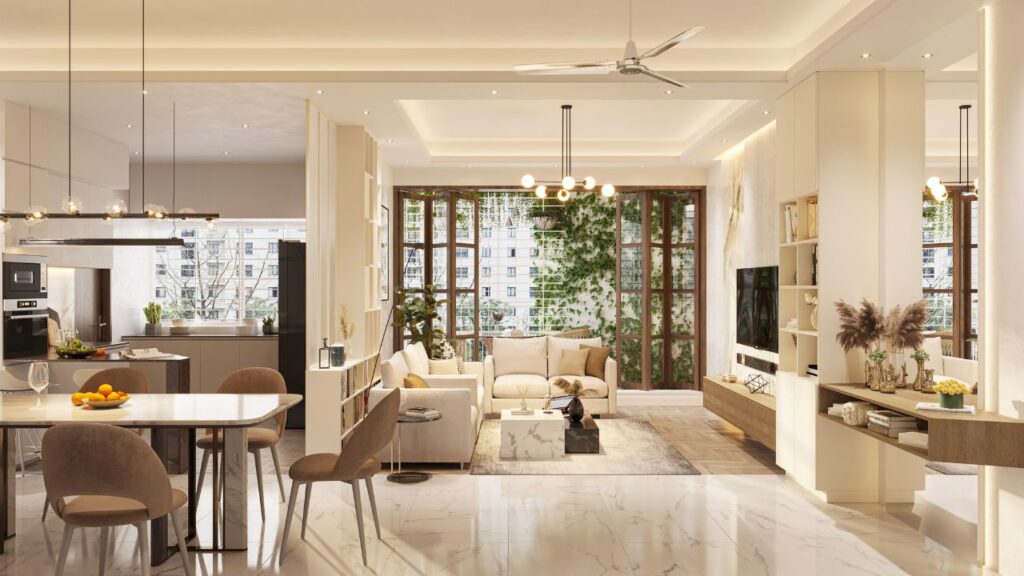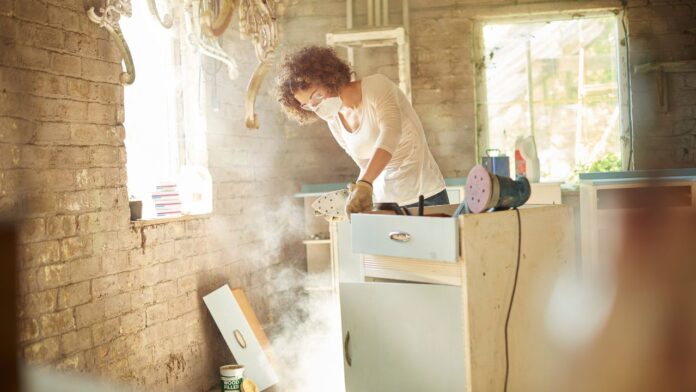In today’s world, sustainability is more than just a buzzword—it’s a lifestyle. Circular design trends are making waves in the interior design space, pushing us to rethink how we furnish our homes. At the heart of this movement lies upcycled furniture. Instead of buying brand-new pieces, people are now turning to reused and repurposed items that are both eco-friendly and beautiful.
Circular design isn’t just about style. It’s about reducing waste, saving money, and making our homes reflect our values. With climate change concerns and increasing environmental awareness, decorating with upcycled furniture has become a meaningful and trendy choice.
Circular homes also inspire others in the community to consider eco-conscious living. They become models of how sustainability can look beautiful in practice. This shift reflects a broader cultural movement toward thoughtful consumption. Embracing these changes at home allows us to make a positive environmental impact. It also helps set a standard for the next generation of homeowners.
What Is Circular Design?
Circular design focuses on keeping products, materials, and resources in use for as long as possible. It moves beyond sustainability by designing waste and pollution out of the system entirely. Products are created with longevity, repairability, and end-of-life recycling in mind.
In the context of home decor, circular design means furnishing your space with items that have been reused, repurposed, or made with recyclable materials. It’s about embracing durability over disposability. This approach nurtures a sense of responsibility and encourages us to consume more mindfully.
Circular design also aligns with global sustainability goals, including reducing emissions and conserving biodiversity. When applied effectively, it becomes a lifestyle shift that benefits both the planet and future generations. It transforms the way we view waste—no longer as a problem, but as a solution.
Understanding the Concept of Circularity in Interiors
Circular design is a concept where nothing goes to waste. It encourages reusing, repairing, refurbishing, and recycling materials for as long as possible. This is in contrast to the traditional linear model—”take, make, dispose”—which often ends with items going to landfills.
Circular design in interiors involves creating spaces that use sustainable materials and reimagine existing ones. Furniture made from reclaimed wood, refurbished metal, or old fabric finds new life in circular homes.
This approach reduces the need for virgin resources, which saves energy and preserves ecosystems. It also helps designers create timeless pieces that don’t follow fleeting trends. Overall, circularity aims for a closed-loop system where waste becomes a resource. More than a design strategy, it becomes a philosophy of intentional living. It promotes mindfulness in every stage of the design process.
Environmental and Economic Benefits
Circular design doesn’t just help the planet—it also benefits your wallet and community.
|
Benefits of Circular Design |
Details |
|
Reduces landfill waste |
Keeps old furniture and materials out of landfills |
|
Cuts carbon emissions |
Less production means less pollution |
|
Supports local businesses |
Encourages buying from artisans and second-hand shops |
|
Saves money |
Upcycled items are usually cheaper than new ones |
|
Promotes creativity |
Gives homeowners the chance to customize pieces |
By reducing the demand for mass-produced goods, circular design eases pressure on supply chains. It also fosters job creation in the refurbishment and repair sectors. And when people buy locally sourced upcycled pieces, they help build stronger, more sustainable economies. This results in a thriving community-based marketplace. Consumers benefit from unique, story-rich items that aren’t mass-produced.
The Art of Upcycling Furniture: Core Principles
Upcycling is both a creative and practical response to furniture waste. It allows homeowners to give new life to tired, outdated, or discarded items. Unlike traditional recycling, which breaks items down into raw materials, upcycling enhances the value and appearance of the existing object.
This artform is accessible to everyone, from DIY hobbyists to professional designers. With a bit of vision and effort, almost any furniture item can be upcycled. Whether you’re refinishing a wooden table or sewing a new cover for a worn-out sofa, upcycling empowers you to personalize your space.
Beyond aesthetics, upcycling promotes craftsmanship and environmental stewardship. Each project is a small act of rebellion against throwaway culture. It shifts focus from mass consumption to thoughtful transformation—turning the ordinary into something extraordinary.
What Qualifies as Upcycled Furniture?

Upcycling involves taking an old or unwanted item and transforming it into something of higher value or quality. It differs from recycling, which breaks down materials into raw form. Upcycled furniture could be an old chair reupholstered with new fabric, a door turned into a dining table, or pallets repurposed into a bed frame.
Common upcycled furniture materials include:
|
Material |
Examples of Use |
|
Wood |
Pallets, doors, chairs, tables |
|
Metal |
Bed frames, stools, lamp stands |
|
Fabric/Textiles |
Upholstery, cushions, curtains |
|
Glass |
Tabletops, shelves, decorative panels |
|
Plastic |
Chairs, storage containers, planters |
Upcycled pieces often tell a story through their imperfections. These unique characteristics bring authenticity and charm to a home. Most importantly, they reduce the demand for new raw materials. The uniqueness also adds artistic value to interiors. Each item is a one-of-a-kind contribution to your home’s story.
How to Choose Items for Upcycling
Not all old furniture is fit for upcycling. Here are some things to look for:
|
Criteria |
Why It Matters |
|
Structural soundness |
The base should be stable and fixable |
|
Material quality |
Durable woods or metals last longer |
|
Potential for transformation |
Easy to repaint, refinish, or repurpose |
|
Non-toxicity |
Avoid furniture with lead paint or chemical treatments |
Always inspect for pests, mold, or excessive wear before choosing a piece. Consider how much time and effort the transformation might require. Choosing the right item from the start makes the upcycling process smoother and more satisfying. Also think about whether the style suits your space. Visualizing the final result can help you choose wisely.
Circular Design Trends to Watch in 2025

As awareness of climate change continues to grow, circular design trends are evolving to meet both aesthetic and environmental needs. 2025 is expected to bring bolder ideas in sustainable home styling, blending functionality with planet-friendly practices.
Homeowners are seeking furniture that lasts longer, uses fewer resources, and supports ethical production. There’s a shift toward transparency, where consumers want to know the origin and lifecycle of the pieces they bring into their homes.
The fusion of technology with circularity is also gaining ground. For example, digital platforms are helping match consumers with local artisans and upcycled furniture creators. Smart design will meet sustainability to create homes that are both efficient and ethically inspired.
Minimal Waste, Maximum Style
One major trend is designing with minimal waste in mind. This includes modular and multifunctional furniture, such as a sofa that turns into a bed or a coffee table with storage inside.
|
Trend |
Why It’s Popular |
|
Modular designs |
Flexibility in small spaces |
|
Multifunctional items |
Save space and money with dual-purpose furniture |
|
Disassembly-friendly |
Easy to repair, move, or replace parts |
This trend supports a clutter-free lifestyle, ideal for modern urban homes. It also helps reduce overconsumption and impulse buying. Smart, space-saving furniture appeals to minimalists and eco-conscious shoppers alike. These designs make moving easier and reduce long-term costs. They cater to renters and frequent movers as well.
Vintage Revival with a Twist
Retro furniture styles are making a comeback—but with modern finishes and colors. Mid-century modern pieces are being painted in pastel or bold tones, creating a fusion of old and new.
|
Style |
Modern Twist |
|
Mid-century modern |
Repainted with bright colors |
|
Art deco |
Polished metal combined with raw wood |
|
1970s boho |
Refreshed with minimalist patterns |
This mix of nostalgia and innovation adds character to any room. Reviving older styles reduces waste and honors traditional craftsmanship. Plus, it gives homeowners a chance to tell stories through their furniture. These styles offer familiarity with a refreshed look. They also pair well with modern technology and appliances.
Mixed Materials and Raw Finishes
Designers are blending natural and industrial elements. Combining wood with metal, or using raw, unfinished materials adds character and charm to interiors.
|
Material Mix |
Effect |
|
Wood + Metal |
Industrial yet warm look |
|
Rattan + Fabric |
Earthy and cozy atmosphere |
|
Glass + Concrete |
Sleek and modern touch |
These combinations create visually rich interiors that feel layered and dynamic. Raw finishes bring authenticity to modern spaces. Mixed materials also offer durability along with aesthetic appeal. They showcase contrast and craftsmanship. The blending encourages innovation and functional design.
DIY Aesthetic and Personal Storytelling
Homeowners are increasingly adding their personal touch to decor. Whether it’s painting old drawers or repurposing windows into photo frames, storytelling through furniture is becoming a popular trend.
|
DIY Project |
Emotional Value |
|
Painted dresser |
Family heirloom passed down generations |
|
Reupholstered sofa |
Personalized to match new room aesthetics |
|
Handmade headboard |
Reflects creativity and uniqueness |
Each project allows the creator to embed memories into their space. DIY pieces often serve as conversation starters. They also provide a sense of pride and ownership that mass-produced items can’t match. This creative outlet fosters mental wellness. It turns decoration into a fulfilling experience.
How to Decorate Your Home Using Upcycled Furniture
Decorating with upcycled furniture adds personality and charm to any space. It allows you to create a home that is truly one-of-a-kind while reducing your environmental impact. From rustic to modern interiors, upcycled pieces can complement any design theme.
Start by identifying focal points in each room where an upcycled item can make a statement. This could be a reclaimed wood coffee table, a painted dresser, or even an antique door repurposed into wall art. These pieces often become great conversation starters.
Balance is key—mix upcycled items with new or neutral elements to avoid overwhelming your space. Focus on textures, finishes, and a cohesive color palette to tie everything together. And remember, the best decor reflects your values as much as your style.
Room-by-Room Styling Guide
Living Room
- Use coffee tables made from old pallets.
- Turn wine crates into shelving units.
- Use vintage suitcases as side tables.
These items add warmth and texture to your space. They also act as focal points that showcase your eco-conscious choices. Mix them with contemporary decor for a balanced look. Try layering rugs and cushions for added coziness. Add a bold accent wall for contrast.
Bedroom
- Convert old doors into headboards.
- Repurpose wooden crates for nightstands.
- Paint and distress an old dresser.
Upcycled bedroom pieces create a cozy, personalized retreat. They also reduce the environmental impact of buying new. Use soft lighting and linens to enhance the rustic feel. Experiment with reclaimed wood paneling on walls. Add personal art to tie the space together.
Kitchen & Dining
- Mix-and-match chairs for a quirky dining look.
- Use reclaimed wood for open shelving.
- Turn barrels into kitchen islands.
These creative ideas make your kitchen one-of-a-kind. They also highlight sustainable practices in everyday routines. Choose non-toxic finishes for added safety. Incorporate hanging plants or herbs for freshness. Vintage dishware can add extra charm.
Outdoor Spaces
- Garden benches from metal bed frames.
- Reused tires as flower planters or stools.
- Broken ladders turned into vertical gardens.
Outdoor upcycling can turn your yard into a sustainability showcase. These elements are often weather-resistant and low-cost. Add plants and lighting to create a relaxing atmosphere. Consider solar-powered lighting for efficiency. Paint outdoor pieces in weatherproof colors for a vibrant look.
|
Room |
Upcycled Ideas |
|
Living Room |
Pallet coffee table, crate shelves |
|
Bedroom |
Door headboard, painted dresser |
|
Kitchen |
Reclaimed wood shelves, barrel island |
|
Outdoor |
Tire planters, ladder garden |
FAQs on Circular Design and Upcycled Decor
|
Question |
Answer |
|
Is upcycled furniture durable? |
Yes, especially when restored properly. |
|
Can I upcycle furniture without DIY skills? |
Absolutely. Many shops sell ready-made upcycled items. |
|
Is circular design expensive? |
It can be very affordable if you source smartly. |
|
How do I know if furniture is safe to reuse? |
Avoid anything with mold, rot, or lead paint. |
It’s also important to ventilate and clean pieces thoroughly. You can consult professionals for restoration if unsure. Labels and manufacturing dates can help identify safe items. Older items may require repainting or sealing. Use safety gear when working with aged wood or metal.
A Stylish Future Rooted in Sustainability
Decorating with upcycled furniture is more than a trend—it’s a lifestyle choice that reflects care for the planet and appreciation for craftsmanship. Circular design encourages us to slow down, reuse what we already have, and create homes filled with character, not clutter.
By incorporating upcycled items into your living spaces, you’re not only making a bold style statement but also supporting a better future. Start small. One piece at a time. Your journey toward sustainable, beautiful living begins today.
As more people embrace this style, we move closer to a more sustainable world. Your home can be a powerful expression of values. Let it be a story worth telling. Even small changes contribute to big environmental wins. Inspire others by sharing your circular journey.


















![10 Countries With the Best Healthcare in the World [Statistical Analysis] Countries With the Best Healthcare in the World](https://articleify.com/wp-content/uploads/2025/07/Countries-With-the-Best-Healthcare-in-the-World-1-150x150.jpg)










